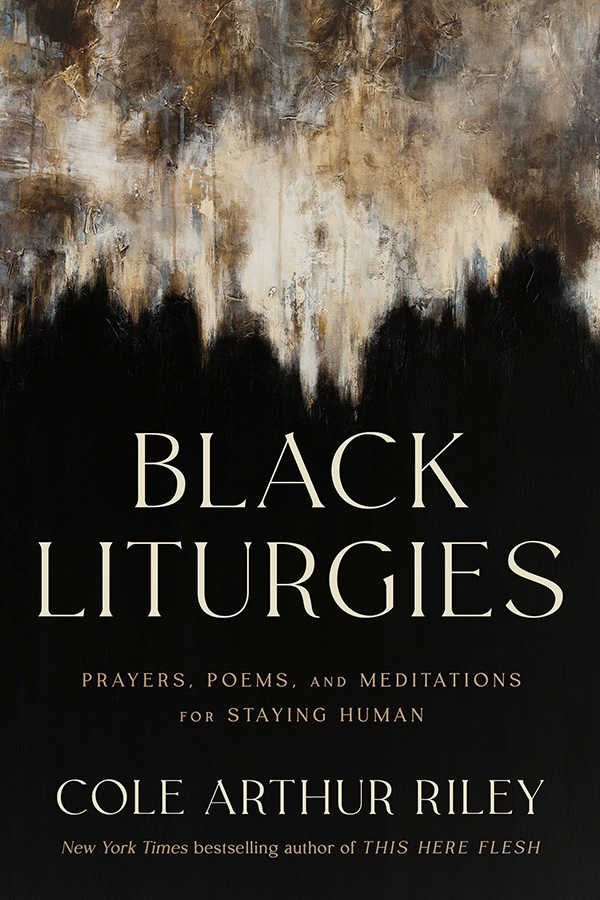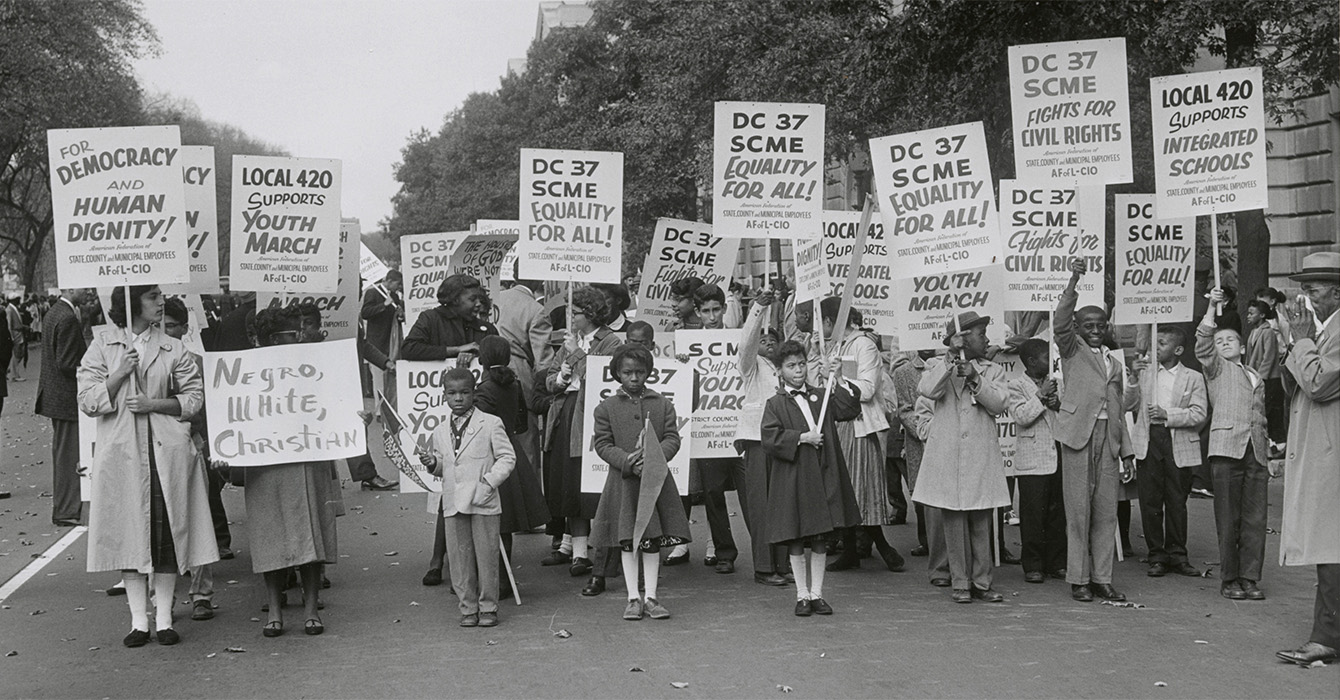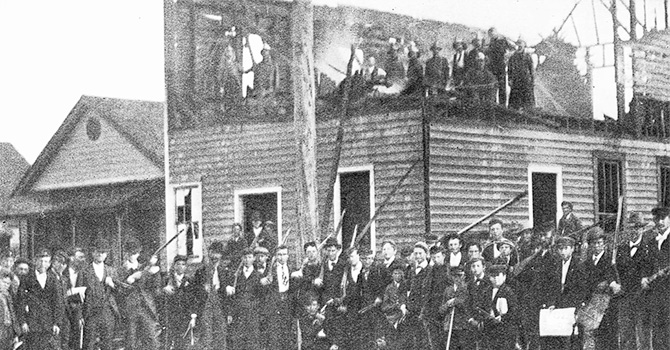Just a few weeks ago, my colleagues and I held back tears to lead the congregation in worship and try to lift the heavy spirit hovering over us.
For the first time ever, I briefly felt concerned about sitting with my back to the doors of our huge sanctuary, which welcomes thousands on any given Sunday.
I wondered whether the worship experience would ever again feel normal.
By now, many households of faith, including my own, have returned to some sense of normalcy after the horrific act of racialized terrorism that occurred at the historic Emanuel AME Church in Charleston, South Carolina.
Yet the “normalcy” we now inhabit is a new normal. For the members of Emanuel AME Church, this means living with the painful reality that they will not see their loved ones again on this side of glory.
For African Americans, it means coming to terms with the demonstrated fact that nowhere is it truly safe to be black -- not even in church, historically a place of refuge for our communities.
For Christians everywhere, it means acknowledging that we worship in a context where something like this can happen, and asking what our work really is in light of this truth.
Thrust into the national spotlight, the African Methodist Episcopal Church must adjust to the reality of a new normal as we continue to lift up the names of our slain brothers and sisters.
This moment is now a part of our collective history -- one we were alive to witness. The day after the shooting, I attended a monthly lunch meeting with my prayer partners, one of whom is a lay leader at an AME church in D.C. Long silences alternated with faltering attempts to articulate our feelings. In her words, this loss felt so deeply personal.
Many other AMEs I have spoken to shared this feeling. Across multiple social media platforms, people changed their profile pictures to the AME emblem, a small but visible act expressing our collective grief, anger and frustration.
We felt the impact of this violence against our church reverberate across African Methodism as we were suddenly reminded of what it meant to be connectional. Although I had never heard the Rev. Pinckney’s name before June 17, his death hit close to home.
He was my age, and his presence and cadence in video clips immediately reminded me of a friend and colleague who is also pastoring a historic AME church. Pinckney and the other ministers who died took the same vows at ordination that I did. No doubt his congregation concluded the service with the doxology, just as my church has done so many Sundays.
Looking at pictures of Mother Emanuel’s sanctuary, I can’t help noticing how the stained-glass windows, fabric-covered wooden pews and hand-carved altar all give its sanctuary the same majestic aura I have felt walking through the doors of Metropolitan AME Church in D.C., Bethel AME Church in Baltimore and so many of our other churches.
I’m sure if you ask any AME Church member, they will recall the countless times they’ve attended Wednesday night Bible studies with a handful of people like the one at Emanuel.
As we come to terms with what has taken place, a review of security protocols will undoubtedly become part of the discussion. I was heartbroken when I came across a sister church’s instructions not to open the door to people unknown to church members. I suspect that security will be a topic at our connectional meetings during the upcoming conference year.
The bomb threat made to another of our historic churches, the threatening, sexist letters sent to at least three AME women pastors and the burning of black churches in the time since the shooting have only increased our sense of urgency.
It is difficult to open the doors of the church spiritually and figuratively while carrying tremendous concerns about doing so literally.
This is our new normal.
Considering all events across the country, it would be a grave mistake if we tried to make our new normal look just like our old one.
The future must see a radical shift in our conversation and perspective. We must openly acknowledge the violence against black bodies -- always pervasive in our country -- that has seemingly become more frequent and normative in recent times. How do we make the shift?
First, we cannot default to comfortable conversation that characterizes this violent act as a tragic but isolated incident. Doing so does not acknowledge its connection to the greater and ongoing narrative that characterizes black bodies as a threat to be subdued and conquered.
Are we really surprised by the ideologies revealed in the shooter’s manifesto when the same racist malady (albeit a milder form) infects our societal systems and institutions? We must be intentional about the language we use, and speak of what happened at Mother Emanuel not just as a terrible tragedy but as racialized terrorism.
This language is challenging, but it’s necessary if we do not want to be guilty of minimizing the implications of what has taken place.
Second, as believers and Christian leaders, we must connect these events to a larger theological concern -- the rejection of the imago Dei in black bodies. Theologian Mary McClintock Fulkerson writes that the imago Dei directs us to consider the way in which God is portrayed in our minds, as well as how such imaging contributes to the valuing and devaluing of human beings.
Has our image of God become so distorted that it sanctions excluding certain people from being image bearers? Are we representing God to people in a way that contributes to their devaluing others? As pastors, preachers and Christian leaders, we are largely responsible for influencing how God is portrayed in the minds and hearts of those we serve. In this season, a large part of our work is to be intentional in our ways of imaging God so that no group is privileged as image bearers over any other.
One of the ways we can do that is by killing the myth that we are all the same, because we are not. I have heard well-meaning white friends and colleagues repeatedly say, “People are just people; we are all the same.” Many of my friends are reluctant to acknowledge our cultural differences and become uncomfortable when I do.
This kind of thinking is dangerous, because it sets up an expectation that all image bearers should look, think and act the same. As a black woman with big curly hair and chocolate-brown skin, I can’t help but ask the question, “If we are all the same, whose idea of ‘same’ are we replicating -- yours or mine?”
It takes courage to openly acknowledge and fully appreciate the differences in experiences, upbringing, opportunities and resources that exist because of race and systemic inequities. Yet that is exactly the kind of courage God calls us to have.
Likewise, African-American leaders, particularly those of us who were raised on a healthy dose of respectability politics and are now well-educated, must affirm that the imago Dei includes all of our sisters and brothers, at every socioeconomic level.
It is hypocritical of us to become enraged when others view black people on street corners as thugs while we look down on the same people in the sanctuary because they are scantily dressed or wearing jeans that hang low. We cannot further perpetuate the rejection of the imago Dei in any form that is not deemed “acceptable.”
The turbulence of the times with which we must now contend mandates that we as Christian leaders take on both of these challenges with purpose and intentionality. Our new normal depends on it.







